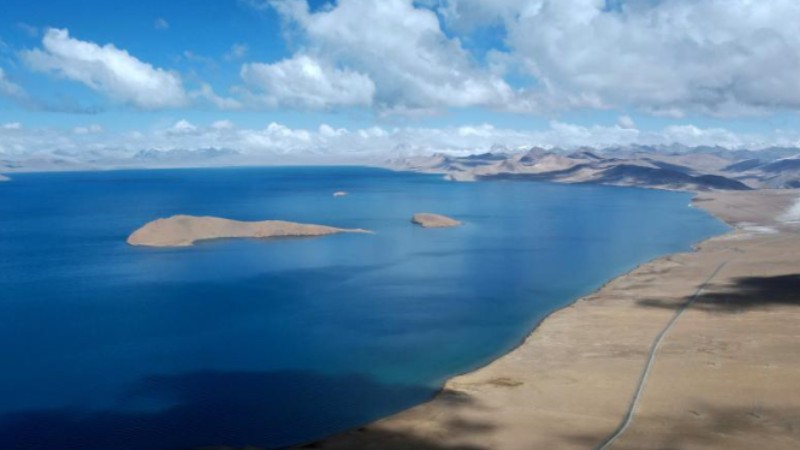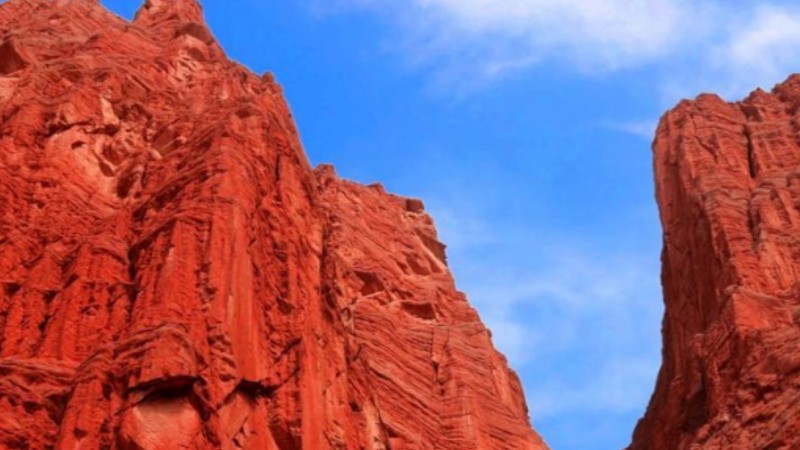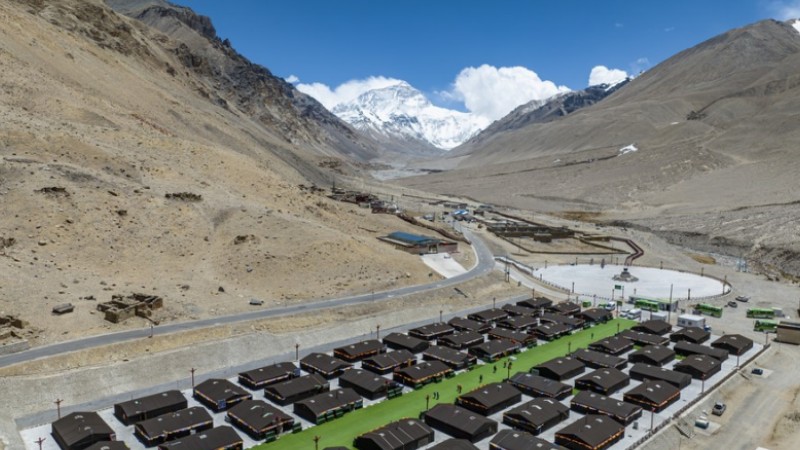Scientists conduct research around Mt. Qomolangma region, SW China

Scientific research members from Tibet University collect aquatic life samples near the mountaineering base camp in the Qomolangma National Nature Reserve in southwest China's Tibet Autonomous Region, May 22, 2023. (Xinhua/Sun Fei)
The 2023 Mt. Qomolangma expedition is part of the second comprehensive scientific expedition on the Qinghai-Tibet Plateau, initiated in 2017.
Since the end of April, a total of 170 scientists across five teams have been conducting research on the water, ecology and human activities around the Mt. Qomolangma region, aiming to reveal the mechanism of environmental change and optimize the ecological security barrier system on the plateau.
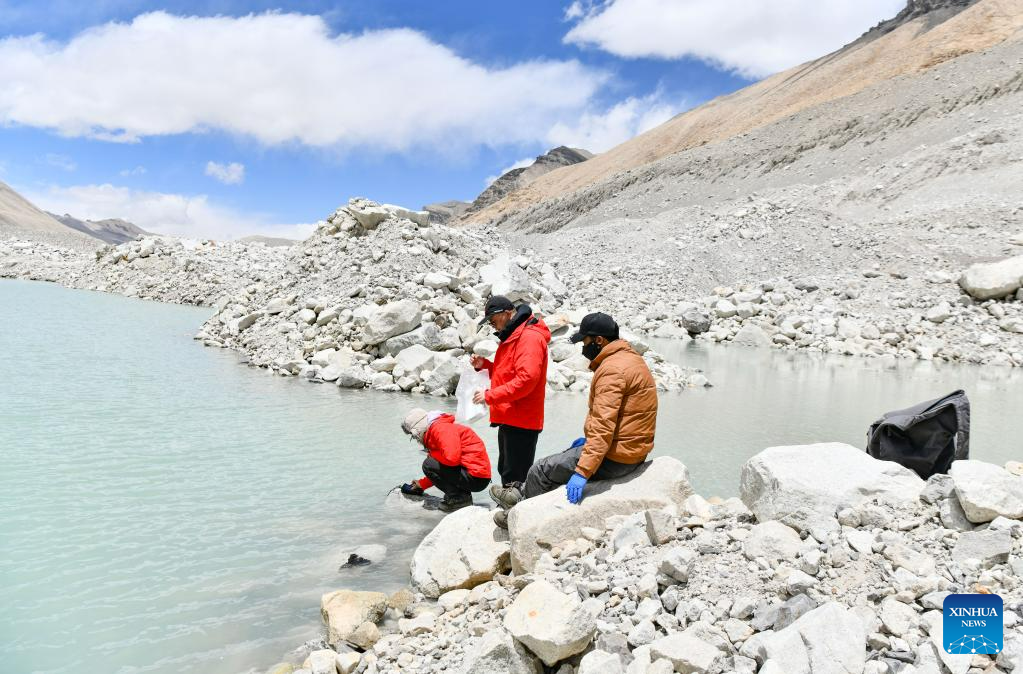
Scientific research members with the Institute of Tibetan Plateau Research under the Chinese Academy of Sciences (CAS) check the water quality of a proglacial lake in the Mount Qomolangma region at an altitude of 5,300 meters, in southwest China's Tibet Autonomous Region, on May 12, 2023. (Xinhua/Jigme Dorje)

Kang Shichang (R), a researcher with the Northwest Institute of Eco-Environment and Resources under the Chinese Academy of Sciences (CAS), checks an ice core, drilled from Mount Qomolangma at an altitude of 6,500 meters, at the mountaineering base camp in the Qomolangma National Nature Reserve in southwest China's Tibet Autonomous Region, May 22, 2023. (Xinhua/Sun Fei)

Xue Yu'ang, a researcher with the Northwest Institute of Eco-Environment and Resources under the Chinese Academy of Sciences (CAS), positions the glaciers in the Mount Qomolangma region at an altitude of 5,300 meters, in southwest China's Tibet Autonomous Region, on May 15, 2023. (Xinhua/Jigme Dorje)

This photo taken on May 24, 2023 shows a view of the Mount Qomolangma. (Xinhua/Sun Fei)
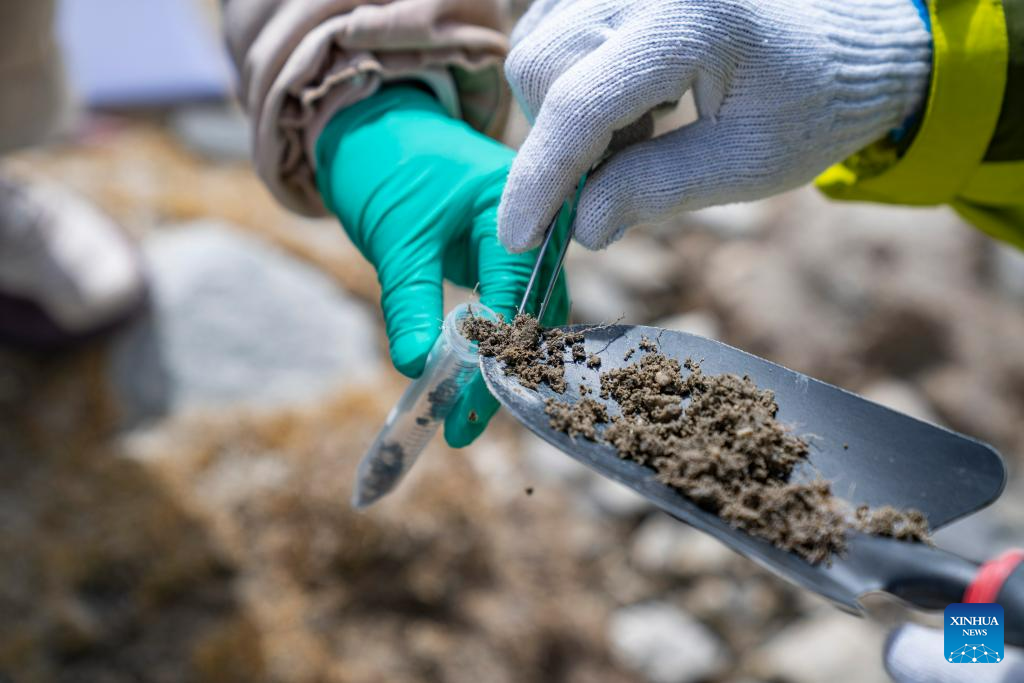
Scientific research members from Tibet University collect soil samples near the mountaineering base camp in the Qomolangma National Nature Reserve in southwest China's Tibet Autonomous Region, May 22, 2023. (Xinhua/Sun Fei)

Zhao Huabiao (C), a researcher with the Institute of Tibetan Plateau Research under the Chinese Academy of Sciences (CAS), teaches scientific researchers to set up the automatic weather station near the mountaineering base camp in the Qomolangma National Nature Reserve in southwest China's Tibet Autonomous Region, May 9, 2023. (Xinhua/Jigme Dorje)

Scientific research members from Tibet University collect aquatic life samples near the mountaineering base camp in the Qomolangma National Nature Reserve in southwest China's Tibet Autonomous Region, May 22, 2023. (Xinhua/Sun Fei)

Zhang Jifeng (L), a researcher from Tibet University, views algae on a rock near the mountaineering base camp in the Qomolangma National Nature Reserve in southwest China's Tibet Autonomous Region, May 22, 2023. (Xinhua/Sun Fei)

This photo taken on May 24, 2023 shows part of the mountaineering base camp for scientists in the Qomolangma National Nature Reserve in southwest China's Tibet Autonomous Region. (Xinhua/Sun Fei)

Scientific research members from Tibet University conduct a survey of aquatic ecosystems near the mountaineering base camp in the Qomolangma National Nature Reserve in southwest China's Tibet Autonomous Region, May 22, 2023. (Xinhua/Sun Fei)
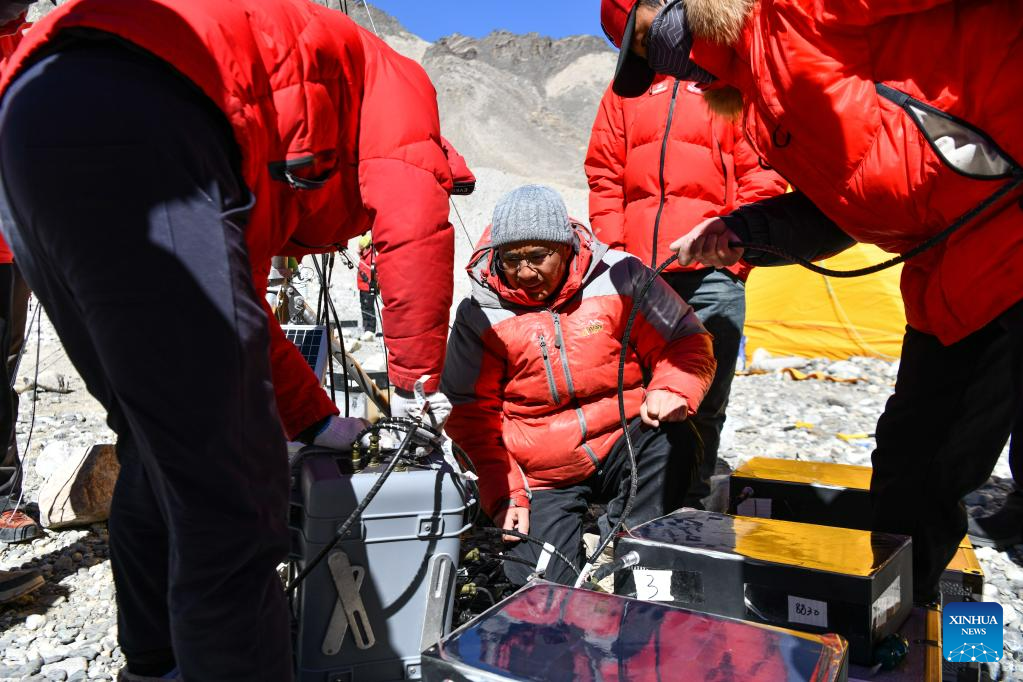
Zhao Huabiao (C), a researcher with the Institute of Tibetan Plateau Research under the Chinese Academy of Sciences (CAS), teaches scientific researchers to set up the automatic weather station near the mountaineering base camp in the Qomolangma National Nature Reserve in southwest China's Tibet Autonomous Region, May 9, 2023. (Xinhua/Jigme Dorje)
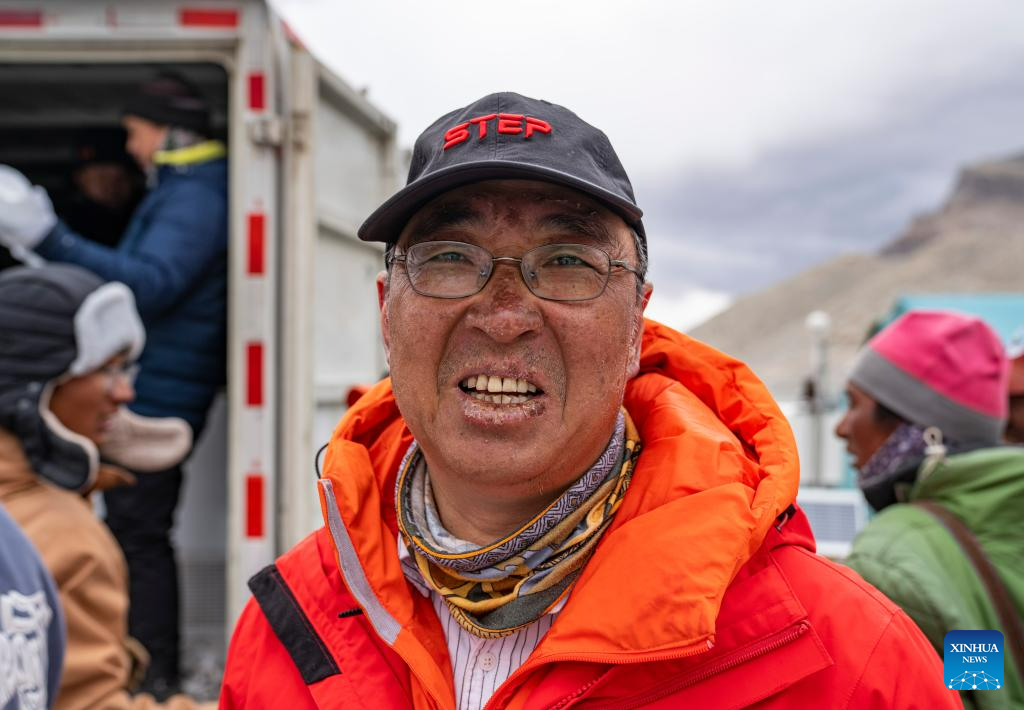
Kang Shichang, a researcher with the Northwest Institute of Eco-Environment and Resources under the Chinese Academy of Sciences (CAS), poses for a photo at the mountaineering base camp in the Qomolangma National Nature Reserve in southwest China's Tibet Autonomous Region, May 22, 2023. (Xinhua/Sun Fei)

Xue Yu'ang, a researcher with the Northwest Institute of Eco-Environment and Resources under the Chinese Academy of Sciences (CAS), positions the glaciers in the Mount Qomolangma region at an altitude of 5,300 meters, in southwest China's Tibet Autonomous Region, on May 15, 2023. (Xinhua/Jigme Dorje)

Scientific research members from Tibet University collect soil samples near the mountaineering base camp in the Qomolangma National Nature Reserve in southwest China's Tibet Autonomous Region, May 22, 2023. (Xinhua/Sun Fei)

Qiu Haiying, a researcher with the Institute of Tibetan Plateau Research under the Chinese Academy of Sciences (CAS), checks the water quality of Rongbuk Glacier near the mountaineering base camp in the Qomolangma National Nature Reserve in southwest China's Tibet Autonomous Region, May 14, 2023. (Xinhua/Sun Fei)

Scientific research members from Tibet University measure the temperature of soil near the mountaineering base camp in the Qomolangma National Nature Reserve in southwest China's Tibet Autonomous Region, May 22, 2023. (Xinhua/Sun Fei)

Su Tao (R), a researcher with the Xishuangbanna Tropical Botanical Garden under the Chinese Academy of Sciences (CAS), and his colleague mark on specimen bags at the mountaineering base camp in the Qomolangma National Nature Reserve in southwest China's Tibet Autonomous Region, May 14, 2023. (Xinhua/Sun Fei)

Scientific research members from Tibet University collect aquatic life samples near the mountaineering base camp in the Qomolangma National Nature Reserve in southwest China's Tibet Autonomous Region, May 22, 2023. (Xinhua/Sun Fei)

Kang Shichang (L), a researcher with the Northwest Institute of Eco-Environment and Resources under the Chinese Academy of Sciences (CAS), discusses the formation of glacial lake with a researcher in the Mount Qomolangma region at an altitude of 5,300 meters, in southwest China's Tibet Autonomous Region, on May 14, 2023. (Xinhua/Sun Fei)
Photos
Related Stories
- Letter from Lhasa: Why climb the world's highest peak?
- Mt. Qomolangma expedition 2023 to upgrade meteorological observation level
- 70 years after man's 1st summit, Chinese expedition makes way to world's highest peak
- Maintenance work of world's highest weather station completed
- Letter from Lhasa: An odyssey to Mount Qomolangma base camp
Copyright © 2023 People's Daily Online. All Rights Reserved.






